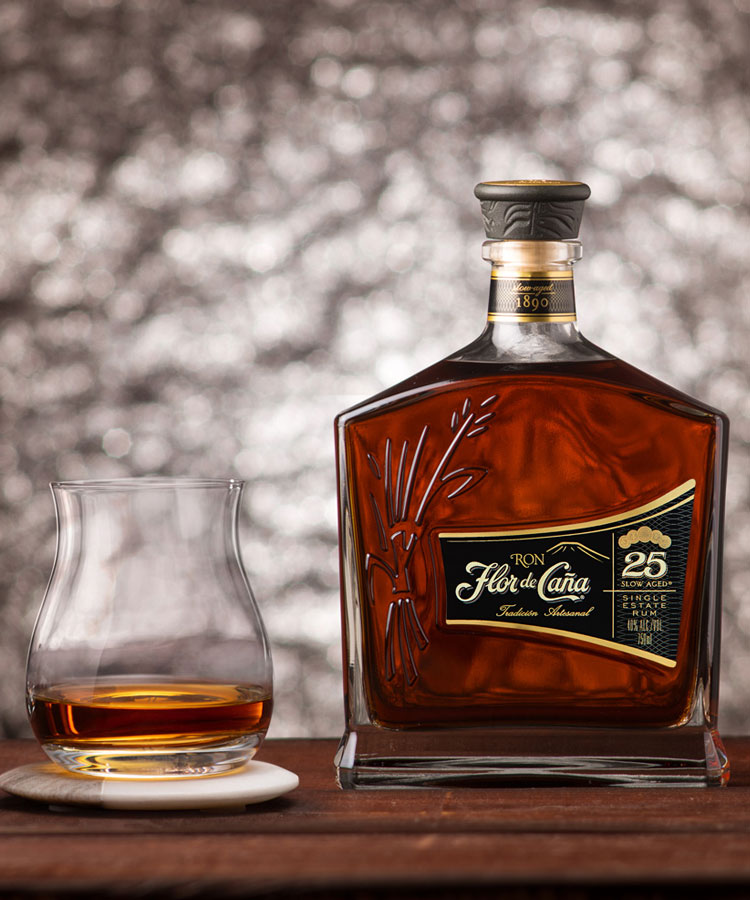
Rum is a truly global spirit. Unlike, say, Scotch or Cognac, rum can be made virtually anywhere.
Today you’ll find locally produced bottles everywhere from the Caribbean to the Congo; Honduras to Hawaii. You’d be searching for quite some time, however, before you found one with the pedigree of Flor de Caña. The 125-year-old Nicaraguan brand has carried its craft across five generations of family stewardship, amassing countless accolades along the way. Most recently, it was named 2017 Best Rum Producer of the Year at the International Wine and Spirit Competition in London.
How has Flor de Caña sustained such stature throughout the past century? Let us count the ways. Here are five things to know about the world’s finest rum.
From One Man’s Mission to Family Tradition
When Alfredo Francisco Pellas Canessa left his native Italy for Nicaragua in 1875, rum wasn’t on his mind. During the Gold Rush, Alfredo created a successful steamboat route connecting the Atlantic to the Pacific, passing through Nicaragua. But destiny would set him on a new course altogether.
The natural beauty of Nicaragua — pristine lakes and waterfalls, fertile jungle, bountiful sugarcane — convinced him to make rum his business. So in 1890 he established a distillery at the base of San Cristóbal, the tallest and most active volcano in Nicaragua. This fateful decision led to the birth of Flor de Caña, and a liquid legacy guarded today by his great-great-grandchildren.
The Secret Is in the Soil
Setting up shop under the shadow of an active volcano might sound risky, but this particular real estate is entirely responsible for Flor de Caña’s distinctive flavor profile. The soil is fertilized by ash, the ideal rooting ground for rich molasses. That same mineral-laden earth helps enrich the water, percolating through the ages into underground reservoirs. Consequently, this unique biome artfully sculpts the two ingredients most vital to high-end rum.
The microclimate surrounding San Cristóbal plays another key factor. “Flor de Caña matures at a higher temperature and humidity level than other spirits such as whiskey and Cognac,” Mauricio Solórzano, global brand ambassador, says. “These conditions lead to a more dynamic interaction between the barrel and rum and to a higher [rate of evaporation].”
It’s a happy set of circumstances and it creates rich, complex rum. Flor de Caña rums are aged from four up to 25 years, and are dark amber, bold-bodied, and impossibly smoother.
A Pioneer of Sustainable Spirit-Making
Flor de Caña ran a sustainable business long before the term was trending. For more than a decade, the distillery has operated fully on renewable energy. The company school has provided free education to the children of employees since 1913, and a company hospital has offered free medical services to employees and their families since 1958.
“Flor de Caña is one of the early trailblazers in this space,” Paul Rice, president and CEO of Fair Trade USA, says. “They are one of just a few spirits companies to adopt Fair Trade practices in their supply chain.”
It demonstrates not only the company’s commitment to environmentalism, but to the economic and social wellbeing of those who craft the rum.
“Flor de Caña continues raising the bar for the global spirits industry around environmental sustainability and social responsibility,” says Rice. “[They’ve created] a mechanism for investing in the workers producing the raw ingredients for the rum. We’re excited by this partnership and the ripple effect that it’s poised to create.”
100 Percent Natural From Field to Flask
Ultimately, what you pour out of the bottle is only going to be as good as the ingredients that went into it. Blessed with volcano-enriched molasses, Flor de Caña safeguards its product through every step of production.
“The alcohol is naturally aged in small, white oak premium bourbon barrels sealed with Nicaraguan plantain leaves,” Solórzano says. “Our rums mature without artificial ingredients, accelerants, and with zero sugar content.” It’s a promise rarely made by large-scale rum distilleries.
A Bartender’s Best Friend
As gentle as they are to sip, the Flor de Caña portfolio is fun and flexible in cocktails. This fact is not lost on bartenders.
“I enjoy how the different ranges have very different flavor profiles,” Micah Melton, beverage director at The Aviary in Chicago and New York, says. “From crisp and dry, to rich and toffee — you can really play up the nuance between the 4 year and the 25, and everything in between.”
Melton suggests calling on younger expressions of Flor de Caña to supplant whiskey in a Boulevardier. This preparation subdues the rum’s natural sweetness, balancing it with dry and bitter tones from vermouth and Campari.
When it’s time for dessert, Melton enjoys busting out the elder aged liquid to celebrate its underlying depth. He recently used it in an after-dinner-style Manhattan designed to “bring out the rich chocolate and vanilla notes… accented with chocolate and mint,” he says. “It’s a Peppermint Patty-inspired rum Manhattan, with Flor de Caña 25 Year, dark chocolate-infused vermouth, fernet, and menthol.” Thirsty yet?
Where to Buy!
Find your bottle of Flor de Caña at any of these sites: Total Wine, Drizly, Caskers, Flaviar, or Mini Bar Delivery.
This article is sponsored by Flor de Caña.
